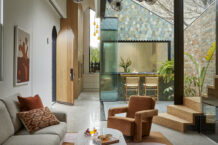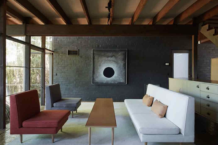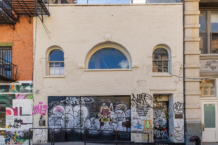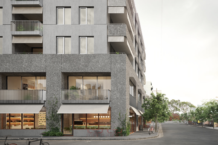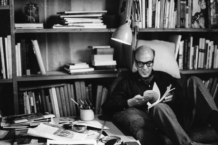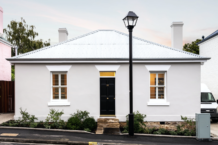Cycling and the City
Ideas - by Open Journal
While many Melbournians know that cycling is a sustainable, healthy alternative to driving a car in urban areas, cycling still only accounts for a small proportion of daily travel. Naturally, improved infrastructure for bike riders is crucial for lifting this number but so to is our mindset.
Bike riding advocates, Bicycle Network say that 59% of Australians are interested in bike riding but won’t because they’re concerned about safety. But is this concern warranted? Research from several studies here and overseas including Peter Jacobsen’s in 2003 and Shane Turner’s in 2006 shows that it isn’t. Their findings prove a ‘safety in numbers’ phenomenon for cyclists that reduces the crash risk. More cyclists on the road causes other road users to adjust their behaviour for cyclists and thus drive more cautiously.
People in Melbourne are beginning to realise that the benefits of riding a bike do outweigh safety concerns. The latest Super Tuesday bike count, which counts the number of bike riders at key intersections between 7am and 9am, saw a 7% increase of riders commuting to work.
Tess McCarthy of Brunswick is one of these 7% now using a bike to get to work. She moved house in 2014 from Melbourne’s inner south to inner north and was influenced by seeing more cyclists around.
Tess also says visible bike lanes, flat terrain and a friend at work showing her the best route, moved her from concerned to commuting.
She says the 5km trip is “refreshing and energising. The wind and the air wakes you up. I used to walk but it took nearly 45 minutes. On the bike it’s only 20 minutes and I get my heart beating. I think my days are better when I ride too.”
Engineer, James Turnbull rides for practical reasons. Saving up to buy a house, he says riding a bike “saves money”. A sacrifice he now enjoys and a small one compared to moving in with his partner’s parents for the last year, again for financial reasons. Aside from the savings, he enjoys “being part of the wider cycling community and connecting with people through cycling.”
A Ride On magazine investigation found that people like James who swap their car for a bike can save at least $10,000 a year. This saving is based on running a second-hand medium-sized car with low parking fees, insurance and registration which totals approximately $11,000 per year. The running cost of a bike including repairs, accessories and clothing comes out at approximately $1,000 per year. That’s a saving of $833 a month going car-free.
While many are saving money on a bike there’s a small few earning money on a bike too. Blane of Carbegone Couriers has been “riding for money” in Melbourne for eight years and for five years in Dublin before that. Apart from the cash, Blane says he loves what he does because “no day’s the same.” Rather than work in the same building, doing the same thing, it’s “the uncertainty” that keeps him going.
Despite a rise in people cycling in Melbourne, he says the bike courier industry is still pretty underground. “It’s a huge market that’s untapped. So often when I deliver parcels, the recipient is amazed that bike couriers exist in Melbourne.
“Sure, international delivery services have taken a lot of the jobs but big companies could really benefit from working with bike couriers. Delivery vehicles sometimes can’t go where we go so we have an advantage in the city” says Blane.
When asked if it’s safer now riding in Melbourne than when he first started out, Blane says “it feels much the same but I’d err on it being safer now. That’s only because there’s more people cycling. There’s something to say for safety in numbers too I think.”
According to the latest Australian Bureau of Statistics data, Melbourne’s population of 4.4 million is growing faster than any other Australian city. Using a car for small trips in high-density, urban areas will only become more difficult as traffic and parking prices increase. It then makes you wonder if the thought of riding a bike in traffic is any more stressful than the experience of driving a car in traffic.
Whether people living close to the city are riding for health, to save money or even for a job, the bike is making a comeback. Riders are finding it more than just a way to get around too. They’re making it a way to live.
Words by Michael Hobbs





